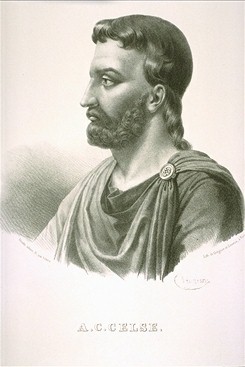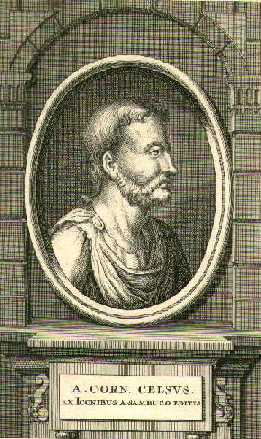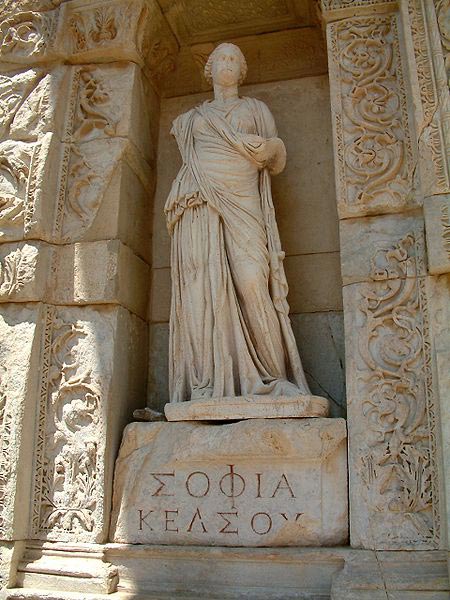<Back to Index>
- Encyclopedist Aulus Cornelius Celsus, 25 B.C.
PAGE SPONSOR



Aulus Cornelius Celsus (ca 25 BC — ca 50) was a Roman encyclopedist, known for his extant medical work, De Medicina, which is believed to be the only surviving section of a much larger encyclopedia. The De Medicina is a primary source on diet, pharmacy, surgery and related fields, and it is one of the best sources concerning medical knowledge in the Roman world. The lost portions of his encyclopedia likely included volumes on agriculture, law, rhetoric, and military arts.
Nothing is known about the life of Celsus. Even his praenomen is uncertain; he has been called both Aurelius and Aulus, with the latter being more plausible. Some incidental expressions in his De Medicina suggest that he lived under the reigns of Augustus and Tiberius; which is confirmed by his reference to Themison as being recently in his old age. It is not known with any certainty where he lived. He has been identified as the possible dedicator of a gravestone in Rome, but it has also been supposed that he lived in Narbonese Gaul, because he refers to a species of vine (marcum) which, according to Pliny, was native to that region. It is doubtful whether he practiced medicine himself, and although Celsus seems to describe and recommend his own medical observations sanctioned by experience, Quintilian says that his volumes included all sorts of literary matters, and even agriculture and military tactics.
Of the numerous volumes of his encyclopedia, only one remains intact, his celebrated treatise On Medicine (De Medicina), which is divided into eight books.
- Book 1 the History of Medicine,
- Book 2 General Pathology,
- Book 3 Specific Diseases,
- Book 4 Parts of the Body,
- Book 5 and 6 Pharmacology,
- Book 7 Surgery and
- Book 8 Orthopedics
In the "Prooemium" or introduction to De Medicina there is an early discussion of the relevance of theory to medical practice and the pros and cons of both animal experimentation and human experimentation.
In the treatment of disease, Celsus' principal method was to observe and watch over the operations of Nature, and to regulate rather than oppose them, conceiving that fever consisted essentially in an effort of the body to throw off some morbid cause, and that, if not unduly interfered with, the process would terminate in a state of health. On occasions, however, he boldly recommends the use of the scalpel; his rules for blood letting and purgatives are laid down with detail and precision; and many of the rules he prescribes were not very different from those still in use at the beginning of the 19th century. His work contains detailed descriptions of the symptoms and different varieties of fever, and he is credited with recording the cardinal signs of inflammation: calor (warmth), dolor (pain), tumor (swelling) and rubor (redness and hyperaemia). He goes into great detail regarding the preparation of numerous ancient medicinal remedies including the preparation of opioids. In addition, he describes many 1st century Roman surgical procedures which included removal of a cataract, treatment for bladder stones, and the setting of fractures.
Hippocrates used the Greek word carcinos, meaning crab or crayfish, to refer to malignant tumors. It was Celsus who translated the Greek term into the Latin cancer, also meaning crab.
The first printed edition of Celsus' work was published in 1478. His style has been much admired as being equal in purity and elegance to that of the best writers of the Augustan age.
Also, Celsus wrote a technical work on agriculture, on which Columella partly based his De Re Rustica.